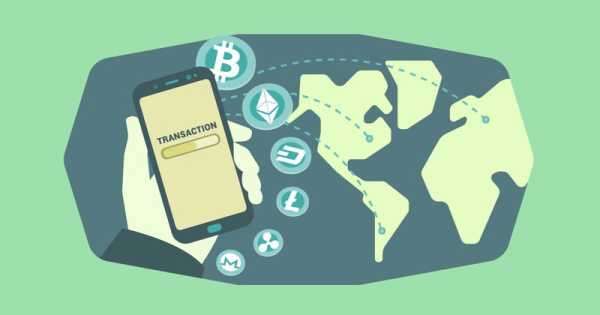
The EU's current legal framework for blockchain focuses mostly on cryptocurrency and financial assets without seeing beyond these (Photo: BeatingBetting.co.uk)
With the Russian invasion of Ukraine, the European Union is once again experiencing an influx of migrants. The 2015 Middle East and North Africa refugee crisis set records, with more than 1.3 million people seeking refuge in the EU.
The ongoing Russian invasion, however, has already seen nearly 5.3 million Ukrainian refugees entering the EU. While there is a distinction between the legal status of Ukrainian migrants and previous waves, migration flows to the EU have been increasing for years and remain an important policy issue.
Entering through different border crossings and dispersing easily across the continent, a key component of which must be addressed is cataloguing migrants. Blockchain technology, with its decentralisation and level of encryption, can provide a comprehensive resolution to this issue, and must be kept in mind by EU policymakers when forming regulations.
Blockchain is a relatively new technology, invented in 2008, mainly to facilitate cryptocurrency transactions.
While that remains a central use, blockchain also has a range of other uses, from addressing global development issues to digitalising public services. Its immutable and distributed nature provides a more secure network than traditional databases, removing the need for intermediaries to guarantee the safety of the stored data.
Digital vs physical ID
This also makes it an important technological advancement in digital ID creation; in contrast to traditional forms of identification, blockchain digital IDs would prevent fraud and protect against identity theft.
The network of IDs would be invulnerable to hacking, and the decentralised ledger means the identifications can be accessed worldwide. In the case of migration and migration policy, this access and guarantee of authenticity is vital in identifying and cataloguing refugees as they arrive at the borders of the EU.
Some progress has already been made applying this technology to migration. The UN High Commissioner for Refugees has begun using biometric registration data to track refugees, and the UN World Food Program uses this information to make cash-based transfers in a Jordanian refugee camp through a pilot programme, Blockchain against Hunger.
This approach of digitising identification helps address some of the core challenges that refugees routinely face. With physical IDs, governments store their data centrally on physical servers. This leaves them susceptible to external threats, such as hacking and even state failure.
Once migrants flee their home countries, their access to their government ID becomes severely curtailed, if not completely cut off, leaving them without identification and sometimes stateless.
With blockchain ID programs, identification would instead be stored digitally, accessible to the destination country with the refugees’ arrival.
This not only allows the government of their destination country to track and catalogue their new residents, but also gives the refugees easier access to social security programmes. It also relieves some pressure on migrants, allowing them to focus on departing their countries without being concerned about retrieving documents.
EU’s narrow crypto focus
The value of using blockchain technology to create and improve digital identification databases is impossible to ignore. It is crucial for EU decisionmakers to consider how overregulation of blockchain may detract from positive benefits. Blockchain’s immutable and private nature must be squared with the EU’s General Data Protection Regulation.
The EU’s current legal framework for blockchain focuses mostly on cryptocurrency and financial assets without seeing beyond these. Ongoing efforts are being made by the European Commission to fight financial crime by logging the identity of both parties involved in transactions to be turned over in the case of any investigations.
Such revelatory policy goes against the core identity of blockchain, and with EU regulation often setting the global standard, other national governments might follow the EU’s lead.
This strict regulatory approach, however, could be catastrophic to the potential benefits of blockchain, especially towards migration policy. The goal should be to maximise opportunities that come with the technology and work towards standardising its use while also providing a legal basis to protect users.
Current steps being taken towards regulation send a signal that the EU is not a welcome place for blockchain innovation, an action that will only continue to stifle the growth of the technology. As international borders become more porous, however, the EU’s current tactics are not supporting the improvement of its migration policies.
Asylum proceedings are one of the biggest issues with the EU’s migration policy, and digital identification through blockchain to register and track refugees would be an instrumental step towards the level of necessary reform.
Overregulation of this new and growing technology poses a risk, not only to the investment potential of the EU as a whole but also to the migration flows across its borders.
The 2015 migration crisis was the first in a surge of asylum seekers, and the influx of Ukrainian refugees have continued to highlight the gaps in the system.
Without smart regulation of blockchain, the European Union will lose the value of the technology before it has a chance to fully realise its potential.
Source: euobserver.com



